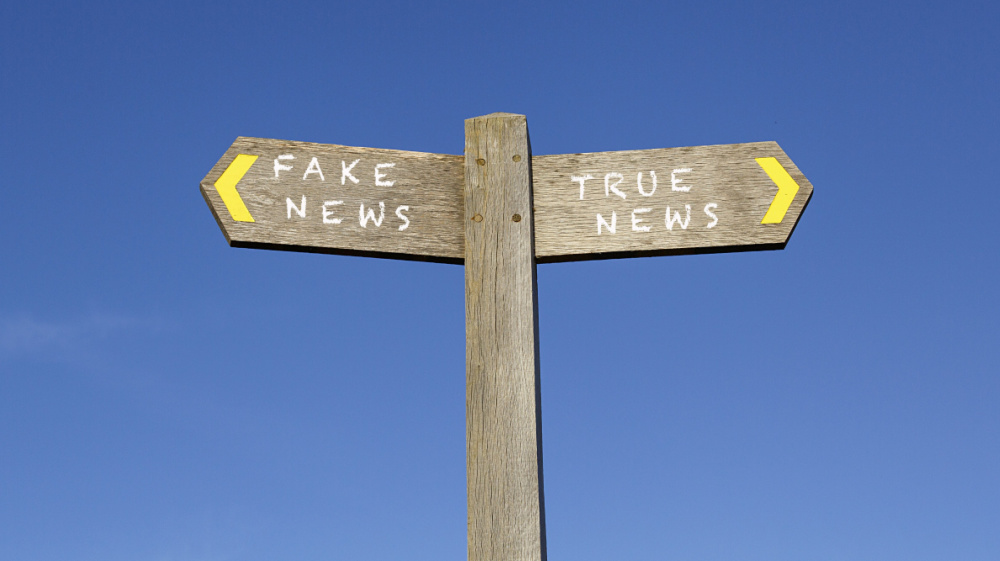Lessons from a Legacy: Honoring My Father’s Impact

I buried my father, Neil Gollogly, last month. He was a former fire chief in our hometown of Millwood, New York. Although I did not follow in his footsteps and join the fire service, the lifetime of lessons I learned from him has helped shape me into a curious, confident woman, the perfect combination for a journalist. These same attributes have also helped me launch my second career as a communications strategist. Lesson #1: Calm Amid Chaos We had a fire scanner in our dining room, and every time it blared, signaling K-R-S-2-2-9-Millwood, we knew my father would be heading out the door. Neil Gollogly was a calm man, an essential quality in every aspect of life, from personal relationships to professional interactions. We teach top executives to pause and take a moment to de-escalate situations. Remaining calm is a skill that requires practice. Lesson #2: A Community Leader My father was not just a beloved fire chief but also a mentor to countless people in our town. His legacy extends beyond the Millwood Fire Company; Neil Gollogly also impacted other first responders and emergency service organizations in the region. An effective leader leads by example. When Millwood needed a new firehouse, my dad gathered a few key people around a table and launched a grassroots campaign. He exemplified the mantra, “Be the change you want to see in the world.” Lesson #3: Effective Communication In his 92 years of life, my father taught me that effective communication is the cornerstone of any successful endeavor, especially in the high-pressure world of first responders, where decisions need to be made quickly. As a parent, he was also a Master of Communication strategies. He was always compassionate when I made a mistake and knew how to wield the power of a strong, silent pause when I was in trouble. Sometimes, the most effective communication is that silent, powerful moment where truth lingers in the air. As we honor my father’s legacy, let’s prioritize communication as a vital skill that shapes not just first responders, but anyone striving to make a difference. By engaging with and nurturing our communities, we ensure that the spirit of optimism and togetherness endures for generations to come.
Who Are Your Stakeholders?

At Fallston Group, we understand that the term “stakeholder” frequently arises in business discussions, yet its significance often extends beyond mere terminology. Stakeholders encompass a diverse group of individuals and entities, including colleagues, employees, business associates, government officials, and community leaders who have a vested interest in your success. These individuals are invested in your personal and professional achievements. For instance, a community pastor with employees in their congregation or local politicians aiming for job creation through your business expansion can be considered stakeholders. Essentially, stakeholders are those who, directly or indirectly, influence or are influenced by your organization’s actions. In Prosperous Times: Stakeholders play a crucial role in amplifying your organization’s messaging during periods of growth, recognition, or project completion. Their support and positive influence are instrumental in enhancing your reputation, image, and trust within the community and industry. Research by the World Economic Forum indicates that companies with strong stakeholder relationships tend to achieve 16% higher profit margins compared to those with weaker connections. During Challenging Times: Engaging with stakeholders during difficult periods is not merely a strategic move but a vital source of reassurance and support. Given their vested interest in your organization’s well-being, stakeholders can help you understand the broader impact of a crisis. They can leverage their voices to share key messages and demonstrate solidarity. Additionally, stakeholders often provide unique perspectives that are invaluable in navigating challenging situations. A study by the Harvard Business Review found that 85% of companies that effectively engaged stakeholders during a crisis reported a faster recovery and less reputational damage. The Importance of Effective Communication: Effective communication is more than just a tool; it is essential for building strong, trust-based relationships with stakeholders. By involving the right allies, stakeholders can significantly contribute to protecting your organization’s reputation and ensuring its resilience. Their support can enable your organization to emerge stronger from any challenges it faces. Research from the Edelman Trust Barometer highlights that organizations perceived as engaging transparently and effectively with stakeholders are 2.5 times more likely to be trusted by the public. At Fallston Group, we believe that understanding and leveraging the power of stakeholders is crucial for any organization aiming to achieve sustained success and resilience. By fostering strong relationships based on mutual trust and effective communication, stakeholders can become invaluable allies in both prosperous and challenging times.
Trust and the Media: The Problems & Potential Solutions

Trust and the Media: The Problems & Potential Solutions It began with another eye roll. In a meeting, I mentioned my background as a journalist, and I sensed the smirky reactions. When I first started in the news industry more than 30 years ago, people were excited to hear about what stories I was covering and what famous people I may have met. But times have changed. Now journalists face constant skepticism and allegations about ‘fake news.’ I left the TV Industry four years ago, and I am currently a communications strategist who cringes whenever someone tells me what is wrong with the news industry. Here’s WHY: Many hardworking, honest, fair, empathetic, and fact-driven journalists do great work in their communities, but there are certainly others who have tarnished the industry’s reputation. Yes, it’s cringeworthy to all of us who care deeply about our profession. THE PROBLEM The problem is that there is a strong narrative that journalists are “the enemy.” Admittedly, there is strong evidence concerning how trust in the news industry has disintegrated over time. A 1974 Gallup poll found that 74% of Americans had a great deal/fair amount of trust in mass media. Fast forward almost 50 years, and that number is cut in half. A Gallup Poll taken in October 2022 finds that only 34% of Americans have a great deal/fair amount of trust in mass media. That’s cringeworthy. Many factors play a role in the news media’s decline in trust. For example, the lines between news, entertainment, and commentary began to blur when cable news gained popularity. The definitive border between fact and opinion must be clarified. There are also numerous people/sites on every digital platform that define themselves as news sources. However, it needs to be made clear what credentials the reporter or news outlets have and what ethics they follow when reporting. Still, Pew Research found in a poll taken last Fall, that U.S. adults under 30 now trust information from social media almost as much as national news outlets. THE SOLUTION The solution is simple: you build trust through honesty. Transparency is crucial right now because trust is so fragile. For journalists, the best way to build trust with an audience is to explain WHY you are following a story and HOW you ended up with the conclusions you are reporting. Journalists need to double-check facts with objective, supportive data. Journalists need to double-check sources too. This is a time when it seems anyone can say anything, so it’s important to make sure any source you use is legitimate and without bias. Finally, journalists need to ask themselves: Did I eliminate any self and source-bias when formulating the story? Was I objective with my line of questioning? Am I holding the right people accountable? Is the story accurate and objective? Did I include all sides of the story? Did I double-check my data and facts? Do I show multiple viewpoints? Have I explained WHY the story impacts the community? Have I included the ‘what’s next’ factor? (sometimes referred to as the ‘moving forward’ factor)? If a mistake is made, have I adequately corrected it in the same forum? When I was a journalist and faced a complex story, I liked to use a ‘Process Journalism’ technique to help show the ‘why’ and ‘how’ behind a story. The story would take the viewer on a journey of discovery, as the facts are uncovered and why one interview may have prompted another interview from other sources. ‘Process Journalism’ describes the investigative development that led to the story’s conclusion. Process Journalism is one methodical way to tell stories that could help build the trust factor for viewers. Politics have also weighed heavily on the need for more trust components for journalists. Too often, an audience only wants to hear its own viewpoints mimicked in the news. Journalists must accurately and objectively show all points of view to avoid placating any particular views while keeping their opinions at bay. Many journalists are trying to make progress toward building trust and turn to Radio Television Digital News Association (RTDNA) for guidance on navigating this uphill battle. RTDNA and Magid have created a more complete roadmap for newsrooms to use as guidelines. For example, RTDNA recommends that “journalists be knowledgeable about the local community and what issues are important to local news consumers,” as well as “authentic and genuine” in their coverage. For any working journalist, I suggest they keep a copy handy on their office desk or front seat! Again, many hardworking, honest, fair, empathetic, and fact-driven journalists are doing great work in their communities. Let’s give those deserving journalists a chance to win back your trust while telling your stories. Sources https://news.gallup.com/poll/403166/americans-trust-media-remains-near-record-low.aspx https://www.pewresearch.org/short-reads/2022/10/27/u-s-adults-under-30-now-trust-information-from-social-media-almost-as-much-as-from-national-news-outlets/ https://assets-002.noviams.com/novi-file-uploads/rtdna/Trust_in_Journalism_Project/RTDNATrust-Research-FINAL.pdf
Southwest Airlines Fails to Close Vital Communications Gap

Southwest Airlines is in trouble, under federal investigation and the lead story on most traditional mainstream media news outlets. The real long-term crisis Southwest Airlines faces has nothing to do with the cold front that disrupted flights, caused computer glitches, or created staffing issues. Instead, the real crisis is the failure of leadership to communicate quickly and effectively to all of the micro communities that depended on Southwest Airlines, including all of its stranded and inconvenienced customers.. If Southwest had issued regular updates and explanations for the service disruptions, travelers could have planned accordingly. Instead, families are still stranded in airports without any plan of action – an issue which is costing them unnecessary amounts of time and money! Customers who have had flights canceled have been waiting online (or on hold) for hours to speak with or interact with a ticket agent who, in many cases, cannot provide alternative transportation and logistics courier for days, if not weeks. Additionally, customers say they have waited hours on phone calls to the 800-line only to find the next available flights aren’t until after the New Year. Let’s look at the Southwest Airlines communication timeline: The Southwest website issued this statement with no updates since the initial post: “Due to adverse weather events and their resulting effects, we are currently experiencing operational disruptions and are working diligently and safely to restore normal flight schedules as quickly as possible.” It is one very long sentence (30 words) with no direction given to travelers left stranded. On FACEBOOK: only one post (at 11:09 am EST Monday), with no updates: “We continue to experience high call and social inquiry volumes. Please check your flight status and explore self-service options”. (Southwest Airlines | Book Flights, Make Reservations & Plan a Trip). The FACEBOOK post has had 8.1K comments ranging from disappointment to outrage. On Twitter, the same message has been posted with no additional updates. If Southwest Airlines were issuing updates every hour, with information specific to each airport, travelers may still be grumpy but would be more understanding. Instead, travelers are left in the dark. Without the proper knowledge of how to proceed, frustration and anger escalate. The company’s mission statement is “to connect people to what’s important in their lives through friendly, reliable, and low-cost air travel.” The lack of reliability may hurt the company, but the lack of communication may prove most harmful to Southwest Airlines’ reputation in the long run. Remember, crises cost organizations time, money, customers and careers – Southwest Airlines has traveled nonstop down this trajectory of failure. Southwest Airlines executives must open the lines of communication quickly to offer empathy and explanations. Their actions will decide where the airlines’ image lands in 2023. Remember the general basics of the Resilient Moment Communications Model: What happened? What caused it? What are the short and long-term effects? What’s being done now? What’s being done, or what do we need to do, in the future? If Southwest Airlines quickly embraces this communications model, perhaps they can at least begin to build the trust they’ve already withdrawn from their reputational piggy bank!
